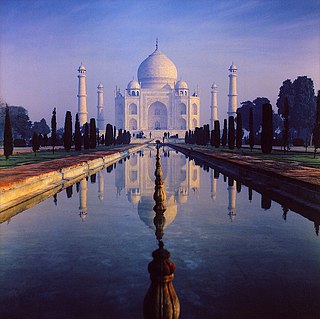List of monuments
| SL. No. | Description | Location | Address | District | Coordinates | Image |
|---|---|---|---|---|---|---|
| N-UP-L16 | Old Nawabi Mosque | Akbarpur | Ambedkar Nagar |  Upload Photo | ||
| N-UP-L17 | Tomb of Salar Saifuddin alias Surkhru Salar | Bahraich | Bahraich |  Upload Photo | ||
| N-UP-L18 | Large brick strewn khera being the ruins of an apparently Buddhist city | Chandra or Chardah | Bahraich |  Upload Photo | ||
| N-UP-L19 | Khera said to be the ruins of one of the principal cities of Raja Karna of the Mahabharata | Hathi Kund | Bahraich |  Upload Photo | ||
| N-UP-L20 | Tomb of Rajab Sajar alias Hatila Salar | Shahpur Jote Yusuf | Bahraich |  Upload Photo | ||
| N-UP-L21 | Domes and buildings inside the inner enclosure including the ancient walls of the inner enclosure of Saiyid Salar Masud's celebrated dargah | Singha Parasi | Bahraich |  Upload Photo | ||
| N-UP-L22 | A mound 20' high apparently formed of solid brick work where the Prithvinath lingam and a copper plate grant were found | Pachran | Balrampur |  Upload Photo | ||
| N-UP-L23 | Mound locally known as Ora Jhar situated on the road from Balrampur near the ancient remains of Sahet-Mahet (Sravasti) | Ghooghulpur | Balrampur |  Upload Photo | ||
| N-UP-L24 | Mound locally known as Penahia Jhar situated on the road from Balrampur near the Ancient remains of Saheth-Maheth (Sravasti) | Ghooghulpur | Balrampur |  Upload Photo | ||
| N-UP-L25 | Mound locally known as Kharahua Jhar situated on the road from Balrampur near the Ancient remains of Saheth-Maheth (Sravasti) | Ghooghulpur | Balrampur |  Upload Photo | ||
| N-UP-L64 | Three mounds known as Mani-Parbat, Kuber Parbat and Sugrib Parbat | Ayodhya | Faizabad |  Upload Photo | ||
| N-UP-L65 | Beni Khanam's Tomb | Faizabad | Faizabad |  Upload Photo | ||
| N-UP-L66 | Gulab Bari | Faizabad | Faizabad |  | ||
| N-UP-L67 | Tomb of Bahu-Begum | Faizabad | Faizabad |  | ||
| N-UP-L68 | Tomb of Hazi Iqbal, Eunuch of Sadar Jahan Begum including the mosque & the whole compound enclosing them | Faizabad | Faizabad |  Upload Photo | ||
| N-UP-L69 | Tomb of Shuja-ud-daula | Faizabad | Faizabad |  Upload Photo | ||
| N-UP-L96 | Mound covered with bricks with the ruins of the temple of Asokanath Mahadeva | Hathili | Gonda |  Upload Photo | ||
| N-UP-L100 | Major Robert's Tomb | Baramau | Hardoi |  Upload Photo | ||
| N-UP-L101 | Brick mound locally called Bhankargarh | Gandwa | Hardoi |  Upload Photo | ||
| N-UP-L102 | High irregular khera covered with broken bricks and sculptures | Hardoi | Hardoi |  Upload Photo | ||
| N-UP-L103 | Mound known as Kalhaur or Killo | Kalhaur | Hardoi |  Upload Photo | ||
| N-UP-L104 | Memorial tomb | Khasaura | Hardoi |  Upload Photo | ||
| N-UP-L105 | Large dih covered with broken bricks and pottery crowned with a small ruined temple of the 19th century AD | Kherwa & Kajhgaon | Hardoi |  Upload Photo | ||
| N-UP-L106 | Memorial cemetery | Madhavganj | Hardoi |  Upload Photo | ||
| N-UP-L107 | Well near the Dargah of Makhdum Shah | Mallawan | Hardoi |  Upload Photo | ||
| N-UP-L108 | Large ruined site called Sandi Khera | Pali | Hardoi |  Upload Photo | ||
| N-UP-L109 | Tomb of Nawab of Sadar Johan | Pihani | Hardoi |  Upload Photo | ||
| N-UP-L110 | Ancient mound | Pahunchina Khera (Lakhamapur) | Hardoi |  Upload Photo | ||
| N-UP-L111 | Phulmati | Sandi | Hardoi |  Upload Photo | ||
| N-UP-L112 | Maqbara of Nawab Diler Khan | Shahabad | Hardoi |  Upload Photo | ||
| N-UP-L144 | Mound | Bithoor | Kanpur |  | ||
| N-UP-L145 | Lona cross Garden | Kanpur | Kanpur |  Upload Photo | ||
| N-UP-L146 | Katcheri Cemetery | Kanpur | Kanpur |  Upload Photo | ||
| N-UP-L147 | Memorial well garden | Kanpur | Kanpur |  Upload Photo | ||
| N-UP-L148 | Sawada Kothi, Monument including flight of steps with the surrounding pateau | Kanpur | Kanpur |  Upload Photo | ||
| N-UP-L149 | Subedar-ka-Talab Cemetery | Kanpur | Kanpur |  Upload Photo | ||
| N-UP-L150 | Wheeler's Entrechment | Kanpur | Kanpur |  Upload Photo | ||
| N-UP-L151 | Kos Minar | Khalaspur | Kanpur |  Upload Photo | ||
| N-UP-L152 | Three images of Lakshmana, Ganesh and Vishnu lying in the cells or each side of the doorway of the temple of Jagannatha and a Gupta pillar lying in the compound of the temple and other images | Behta | Kanpur Dehat |  Upload Photo | ||
| N-UP-L153 | Ancient brick temple | Bhitargaon | Kanpur Dehat |  | ||
| N-UP-L154 | Mound of ruins covered with large bricks and broken figures | Bhitargaon | Kanpur Dehat |  Upload Photo | ||
| N-UP-L155 | Kos Minar | Bhognipur | Kanpur Dehat |  Upload Photo | ||
| N-UP-L156 | Kos Minar | Bhognipur | Kanpur Dehat |  Upload Photo | ||
| N-UP-L157 | Tank near the tomb of Sandal Shah | Bichhiapur | Kanpur Dehat |  Upload Photo | ||
| N-UP-L158 | Temple known as Phulmati Devi | Bihupur | Kanpur Dehat |  Upload Photo | ||
| N-UP-L159 | Kos Minar | Chaparghata | Kanpur Dehat |  Upload Photo | ||
| N-UP-L160 | Kos Minar | Deosar | Kanpur Dehat |  Upload Photo | ||
| N-UP-L161 | Fragment of a pillar | Dumapur | Kanpur Dehat |  Upload Photo | ||
| N-UP-L162 | Kos Minar | Gour | Kanpur Dehat |  Upload Photo | ||
| N-UP-L163 | Kos Minar | Gour | Kanpur Dehat |  Upload Photo | ||
| N-UP-L164 | Kos Minar | Halia | Kanpur Dehat |  Upload Photo | ||
| N-UP-L165 | Kos Minar | Jallapur Sikandara | Kanpur Dehat |  Upload Photo | ||
| N-UP-L166 | Ancient brick temple | Kanchilipur | Kanpur Dehat |  Upload Photo | ||
| N-UP-L167 | Two ancient brick temple | Khurda | Kanpur Dehat |  Upload Photo | ||
| N-UP-L168 | Mound and the ancient pillar in a modern domed chamber together with the stone cock lying in the front of it | Lala Bhagat | Kanpur Dehat |  Upload Photo | ||
| N-UP-L169 | Kos Minar | Pailwaru | Kanpur Dehat |  Upload Photo | ||
| N-UP-L170 | Temple known as 'Mahadeo Baba' | Parauli | Kanpur Dehat |  Upload Photo | ||
| N-UP-L171 | Kos Minar | Pitampur | Kanpur Dehat |  Upload Photo | ||
| N-UP-L172 | Kos Minar | Raigawan | Kanpur Dehat |  Upload Photo | ||
| N-UP-L173 | Kos Minar | Rajpur | Kanpur Dehat |  Upload Photo | ||
| N-UP-L174 | Kos Minar | Sankhiln Buzurg | Kanpur Dehat |  Upload Photo | ||
| N-UP-L175 | Kos Minar | Sardarpur | Kanpur Dehat |  Upload Photo | ||
| N-UP-L176 | Sanskrit inscription in the well of Gayadin Sukal | Subhanpur | Kanpur Dehat |  Upload Photo | ||
| N-UP-L177 | Brick temple at Nebia Khera | Bhadwara | Kanpur Dehat |  Upload Photo | ||
| N-UP-L182 | British Monuments | Aurangabad | Kheri |  Upload Photo | ||
| N-UP-L256 | Mounds covered with bricks | Arjunpur and Rukhara | Lucknow |  Upload Photo | ||
| N-UP-L257 | Cemetery | Bargawan | Lucknow |  | ||
| N-UP-L258 | Cemeteries | Jahraila Road | Lucknow |  Upload Photo | ||
| N-UP-L259 | Amjad Ali Shah's Mausoleum | Hazratganj | Lucknow | 26°50′57″N80°56′23″E / 26.849138°N 80.939788°E |  | |
| N-UP-L260 | Bibiapur House | Cantonment | Lucknow | 26°49′20″N80°58′55″E / 26.822191°N 80.981918°E |  Upload Photo | |
| N-UP-L261 | British Cemetery at Chiria jhil | Sapru Marg | Lucknow | 26°51′14″N80°56′48″E / 26.853887°N 80.946619°E |  Upload Photo | |
| N-UP-L262 | Buildings, north-west of Dilkusha Palace | Cantonment | Lucknow |  Upload Photo | ||
| N-UP-L263 | Cemetery at Alambagh | Lucknow | Lucknow | 26°48′49″N80°54′19″E / 26.813558°N 80.905259°E |  Upload Photo | |
| N-UP-L264 | Cemetery at Dilkusha | Lucknow | Lucknow | 26°49′42″N80°57′54″E / 26.828402°N 80.965051°E |  Upload Photo | |
| N-UP-L265 | Cemetery at Gaughat | Lucknow | Lucknow |  Upload Photo | ||
| N-UP-L266 | Cemetery near Kaisar Pasand | Lucknow | Lucknow | 26°51′07″N80°55′43″E / 26.851887°N 80.928623°E |  Upload Photo | |
| N-UP-L267 | Cemetery near Fort Machi Bhawan | Lucknow | Lucknow | 26°52′17″N80°54′36″E / 26.871338°N 80.910017°E |  Upload Photo | |
| N-UP-L268 | Cemetery in Raja Incha Singh's compound | Lucknow | Lucknow | 26°51′27″N80°56′18″E / 26.857415°N 80.938413°E |  Upload Photo | |
| N-UP-L269 | Cemetery on La-Martiniere Road | Lucknow | Lucknow |  | ||
| N-UP-L270 | Cemetery at Vilayat Bagh | Lucknow | Lucknow |  Upload Photo | ||
| N-UP-L271 | Dargah Hazrat Abbas | Lucknow | Lucknow | 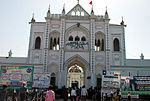 | ||
| N-UP-L272 | Dianut-ud-daula's Karbala | Lucknow | Lucknow |  | ||
| N-UP-L273 | General wali Kothi | Lucknow | Lucknow |  | ||
| N-UP-L274 | Ibrahim Chisti's Tomb | Lucknow | Lucknow | 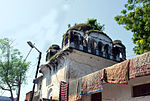 | ||
| N-UP-L275 | Imambara Amin-ud-daula | Lucknow | Lucknow |  | ||
| N-UP-L276 | Imambara of Asaf-ud-daula | Lucknow | Lucknow |  | ||
| N-UP-L277 | Jama Masjid near Hussainabad | Lucknow | Lucknow |  Upload Photo | ||
| N-UP-L278 | Kaiser Bagh Gates | Lucknow | Lucknow |  | ||
| N-UP-L279 | Kalan-ki-Lat at adjoining cemetery in Faquir Mohammad Khan ka Hata | Lucknow | Lucknow |  Upload Photo | ||
| N-UP-L280 | Karbala of Tal Katora | Lucknow | Lucknow |  Upload Photo | ||
| N-UP-L281 | Kaz-Main Buildings | Lucknow | Lucknow |  | ||
| N-UP-L282 | Mulka Jahan's Karbala | Lucknow | Lucknow |  Upload Photo | ||
| N-UP-L283 | Masjid connected with Asaf-ud-daula (also: Asfi Mosque) | Lucknow | Lucknow |  | ||
| N-UP-L284 | Monuments of Ninety-third Highlanders | Lucknow | Lucknow |  Upload Photo | ||
| N-UP-L285 | Nadan Mahal | Lucknow | Lucknow | 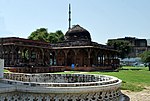 | ||
| N-UP-L286 | Nasir-ud-din Haider's Karbala in Daliganj | Lucknow | Lucknow |  Upload Photo | ||
| N-UP-L287 | Neil's Gate | Lucknow | Lucknow |  | ||
| N-UP-L288 | Old Palace at Dilkusha | Lucknow | Lucknow |  Upload Photo | ||
| N-UP-L289 | Picture Gallery Hussainabad Baradari | Lucknow | Lucknow |  | ||
| N-UP-L290 | Residency Buildings | Lucknow | Lucknow |  | ||
| N-UP-L291 | Rumi Darwaza | Lucknow | Lucknow | 26°51′38″N80°54′57″E / 26.860556°N 80.915833°E |  | |
| N-UP-L292 | Sapper's Tomb | Lucknow | Lucknow | 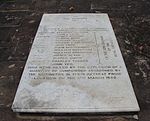 | ||
| N-UP-L293 | Sikander Bagh Building | Lucknow | Lucknow |  | ||
| N-UP-L294 | Sikchawali Kothi | Lucknow | Lucknow |  Upload Photo | ||
| N-UP-L295 | Tahsin Ali's Mosque | Lucknow | Lucknow |  Upload Photo | ||
| N-UP-L296 | Tomb of Gazi-ud-din Haider | Lucknow | Lucknow |  Upload Photo | ||
| N-UP-L297 | Tomb of Janab Aliya | Lucknow | Lucknow |  | ||
| N-UP-L298 | Tomb known as Char Khamba | Lucknow | Lucknow |  Upload Photo | ||
| N-UP-L299 | Tomb at Lotan Bagh | Lucknow | Lucknow |  Upload Photo | ||
| N-UP-L300 | Tomb of Mohammad Ali Shah (also: Chhota Imambara) | Lucknow | Lucknow |  More images | ||
| N-UP-L301 | Tomb at Musabagh | Lucknow | Lucknow |  Upload Photo | ||
| N-UP-L302 | Tomb of Mushir Zadi, wife of Saadat Ali Khan | Lucknow | Lucknow |  | ||
| N-UP-L303 | Tomb of Saadat Ali Khan | Lucknow | Lucknow |  | ||
| N-UP-L304 | Two Cemeteries | Lucknow | Lucknow |  Upload Photo | ||
| N-UP-L305 | Victoria Memorial | Lucknow | Lucknow |  Upload Photo | ||
| N-UP-L306 | Three Tombs | Lucknow Faizabad Road at miles 3 and 5 | Lucknow |  Upload Photo | ||
| N-UP-L307 | Two Cemeteries | Lucknow Faizabad Road at mile 4 | Lucknow |  Upload Photo | ||
| N-UP-L308 | Cemeteries | Lucknow-Kanpur Road at mile 13 | Lucknow |  Upload Photo | ||
| N-UP-L309 | Cemetery | Lucknow - Rae Barelli Road at mile 6 | Lucknow |  Upload Photo | ||
| N-UP-L310 | Cemetery | Marion | Lucknow |  | ||
| N-UP-L311 | Memorial pillar marking the site of the pre-Mutiny Residency in the old Mariaon Cantonment | Mahibullapur | Lucknow |  Upload Photo | ||
| N-UP-L312 | Mound | Nagarm | Lucknow |  Upload Photo | ||
| N-UP-L313 | Mound | Paharnagar | Lucknow |  Upload Photo | ||
| N-UP-L314 | Mound | Takuria | Lucknow |  Upload Photo | ||
| N-UP-L315 | Bridge over the Beta river and temple attached to it | Tikait Ganj | Lucknow |  | ||
| N-UP-L346 | Fort Gate | Rae Bareli | Rae Bareli |  Upload Photo | ||
| N-UP-L347 | Sai Bridge | Rae Bareli –Pratapgarh road | Rae Bareli |  Upload Photo | ||
| N-UP-L348 | Siva Temple | Rajmau | Rae Bareli |  Upload Photo | ||
| N-UP-L349 | Site and stupa and monastery of the Sakyas | Piprahwa | Siddharth Nagar |  Upload Photo | ||
| N-UP-L350 | Ancient Site | Pipri | Siddharth Nagar |  Upload Photo | ||
| N-UP-L351 | Ancient Site | Jungle Belhar | Siddharth Nagar |  Upload Photo | ||
| N-UP-L352 | Ancient Site | Tola Ganwaria in Birdpur frontier road | Siddharth Nagar | 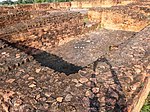 | ||
| N-UP-L353 | Ancient Site | Tola Salrgarh south-west of Siswa Tal near Nepal - India border | Siddharth Nagar |  | ||
| N-UP-L354 | Ancient Site | VillageBirdpur No.1, Tola Thankurpur (on the west of Salya stupa) | Siddharth Nagar |  Upload Photo | ||
| N-UP-L355 | The site of Sahet Mahet measuring 286.026 acres in the Bahraich district (now Sravasti Nagar district) and 123.93 acres in the Gonda district (now Balrampur district) | Sahet-Mahet | Sravasti Nagar |  Upload Photo | ||
| N-UP-L356 | Ancient site near the village of Bhitti | Bhitti | Sravasti Nagar |  Upload Photo | ||
| N-UP-L357 | Mound known as Kutti Behari Das | Ikauna (Chakra) Bhandar (Sahet Mahet) | Sravasti Nagar |  Upload Photo | ||
| N-UP-L358 | Mound known as Kutti Satruhan Das | Ikauna (Chakra) Bhandar (Sahet Mahet) | Sravasti Nagar |  Upload Photo | ||
| N-UP-L359 | Mound known as Bani Nath Mahadeo | Ikauna (Chakra) Bhandar (Sahet Mahet) | Sravasti Nagar |  Upload Photo | ||
| N-UP-L360 | Mound of brick ruins | Tandwa | Sravasti Nagar |  Upload Photo | ||
| N-UP-L361 | Small round shaped mound | Tandwa | Sravasti Nagar |  Upload Photo | ||
| N-UP-L362 | Group of ruined brick temple of the 10th century locally called Teligarhi | Bhagupur | Sultanpur |  Upload Photo | ||
| N-UP-L363 | Mosque | Isauli | Sultanpur |  Upload Photo | ||
| N-UP-L364 | Extensive brick strewn mounds undoubtedly of the ruins of Buddhist cities | Raipur, Tikri, Shahgarh | Sultanpur |  Upload Photo | ||
| N-UP-L365 | Large dih called Majhangaon with brick-towers on the four corners | Sultanpur | Sultanpur |  Upload Photo | ||
| N-UP-L366 | Tomb of Qurban Mohammad | Banger Mau | Unnao |  Upload Photo | ||
| N-UP-L367 | water fall | uttar Pradesh | mirzapur |  Upload Photo |




